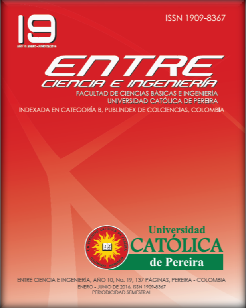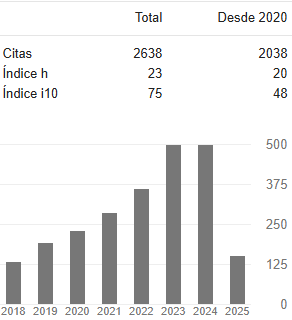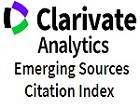Análisis y clasificación de atributos de mantenibilidad del software: una revisión comparativa desde el estado del arte
DOI:
https://doi.org/10.31908/19098367.521Palabras clave:
atributos de mantenibilidad, mantenibilidad de software, sub-características de mantenibilidadResumen
Actualmente el mantenimiento de software es la etapa más costosa del ciclo de vida de dicho producto. Identificar los atributos que influyen sobre la mantenibilidad de software es un aspecto importante para conocer qué factores se podrían incluir durante el proceso de desarrollo con el fin de conseguir un producto altamente mantenible. En este sentido, el presente artículo ofrece una vista integral de diferentes atributos de mantenibilidad obtenidos a partir de la literatura y propone una clasificación de los mismos teniendo en cuenta: (i) las subcaracterísticas de mantenibilidad de ISO/IEC 25010 sobre las que influye, y (ii) el flujo de trabajo del desarrollo de software de RUP (Rational Unified Process) en los que se presenta. Como resultado de la investigación realizada se obtuvieron un total de 18 atributos clasificados de acuerdo a los criterios mencionados anteriormente, los cuales describen diferentes aspectos que se deben considerar cuando se pretende desarrollar un producto altamente mantenible. Los atributos de mantenibilidad y su clasificación, obtenidos en esta investigación han sido utilizados en la realización de un modelo de referencia de procesos que apoya la inclusión de sub-características de mantenibilidad al producto software durante el proceso de desarrollo.
Descargas
Referencias
J. M. Conejero, E. Figueiredo, A. Garcia, J. Hernández, and E. Jurado, “On the relationship of concern metrics and requirements maintainability,” Information and Software Technology, vol. 54, pp. 212-238, 2012.
C. E. H. Chua, S. Purao, and V. C. Storey, “Developing maintainable software: The Readable approach,” Decision Support Systems, vol. 42, pp. 469-491, 2006.
J.-C. Chen and S.-J. Huang, “An empirical analysis of the impact of software development problem factors on software maintainability,” Journal of Systems and Software, vol. 82, pp. 981-992, 2009.
F. J. Pino, F. Ruiz, F. García, and M. Piattini, “A software maintenance methodology for small organizations: Agile MANTEMA,” Journal Of Software Maintenance And Evolution: Research And Practice, vol. 24, pp. 851-876, 2011.
I. S. Organization, “ISO/IEC 25010,” in Systems and software engineering - Systems and software Quality Requirements and Evaluation (SQuaRE) - System and Software Quality Models, ed, 2011.
B. Kumar, “A survey of key factors affecting software maintainability,” in 2012 International Conference on Computing Sciences, 2012, pp. 261-266.
E. B. Swanson, “IS “maintainability”: should it reduce the maintenance effort?,” ACM SIGMIS Database, vol. 30, pp. 65-76, 1999.
B. Anda, “Assessing software system maintainability using structural measures and expert assessments,” in Software Maintenance, 2007. ICSM 2007. IEEE International Conference on, 2007, pp. 204-213.
K. Hashim and E. Key, “A software maintainability attributes model,” Malaysian Journal of Computer Science, vol. 9, pp. 92-97, 1996.
] K. Aggarwal, Y. Singh, P. Chandra, and M. Puri, “Measurement of software maintainability using a fuzzy model,” Journal of Computer Science, vol. 1, p. 538, 2005.
D. Kozlov, J. Koskinen, M. Sakkinen, and J. Markkula, “Assessing maintainability change over multiple software releases,” Journal of Software Maintenance and Evolution, vol. 20, pp. 31-58, 2008
A. Yamashita and L. Moonen, “Do code smells reflect important maintainability aspects?,” in Software Maintenance (ICSM), 2012 28th IEEE International Conference on, 2012, pp. 306-315.
M. Perepletchikov, C. Ryan, K. Frampton, and Z. Tari, “Coupling metrics for predicting maintainability in service-oriented designs,” in Proceedings of the 2007 Australian Software Engineering Conference (ASWEC‘07), 2007, pp. 329-338.
R. Baggen, J. P. Correia, K. Schill, and J. Visser, “Standardized code quality benchmarking for improving software maintainability,” Software Quality Journal, vol. 20, pp. 287-307, 2012.
S. C. Misra, “Modeling design/coding factors that drive maintainability of software systems,” Software Quality Journal, vol. 13, pp. 297-320, 2005.
P. Oman and J. Hagemeister, “Metrics for assessing a software system’s maintainability,” in Software Maintenance, 1992. Proceerdings., Conference on, 1992, pp. 337-344.
W. Hordijk and R. Wieringa, “Surveying the factors that influence maintainability: research design,” in ACM SIGSOFT Software Engineering Notes, 2005, pp. 385-388.
M. Riaz, E. Mendes, and E. Tempero, “A systematic review of software maintainability prediction and metrics,” in Proceedings of the 2009 3rd International Symposium on Empirical Software Engineering and Measurement, 2009, pp. 367-377.
I. Heitlager, T. Kuipers, and J. Visser, “A practical model for measuring maintainability,” in Proceedings of the 6th International Conference on Quality of Information and Communications Technology, 2007, pp. 30-39.
K. D. Welker, “The software maintainability index revisited,” CrossTalk, pp. 18-21, 2001.
K. K. Aggarwal, Y. Singh, and J. K. Chhabra, “An integrated measure of software maintainability,” in Reliability and maintainability symposium, 2002. Proceedings. Annual, 2002, pp. 235-241.
I. S. Organization, “ISO/IEC 9126-1,” in Software Engineering – Product Quality – Part 1: Quality Model, ed, 2001.
“Modelo de referencia para la inclusión de sub-características de mantenibilidad al producto software durante el proceso de desarrollo,” Pregrado, Ingenieria de sistemas, Universidad del Cauca, Popayán, 2014.
F. Brito e Abreu and W. Melo, “Evaluating the impact of objectoriented design on software quality,” in Software Metrics Symposium, 1996., Proceedings of the 3rd International, 1996, pp. 90-99.
M. Sefika, A. Sane, and R. H. Campbell, “Monitoring compliance of a software system with its high-level design models,” in Proceedings of the 18th international conference on Software engineering, 1996, pp. 387-396.
R. Subramanyam and M. S. Krishnan, “Empirical analysis of ck metrics for object-oriented design complexity: Implications for software defects,” Software Engineering, IEEE Transactions on, vol. 29, pp. 297-310, 2003.
E. Capra, C. Francalanci, and F. Merlo, “An empirical study on the relationship between software design quality, development effort and governance in open source projects,” Software Engineering, IEEE Transactions on, vol. 34, pp. 765-782, 2008.
L. Etzkorn and H. Delugach, “Towards a semantic metrics suite for object-oriented design,” in Technology of Object-Oriented Languages and Systems, 2000. TOOLS 34. Proceedings. 34th International Conference on, 2000, pp. 71-80.
S. Khalid, S. Zehra, and F. Arif, “Analysis of object oriented complexity and testability using object oriented design metrics,” in Proceedings of the 2010 National Software Engineering Conference, 2010, p. 4.
F. Zhang, A. Mockus, Y. Zou, F. Khomh, and A. E. Hassan, “How does Context Affect the Distribution of Software Maintainability Metrics?,” in Software Maintenance (ICSM), 2013 29th IEEE International Conference on, 2013, pp. 350-359.
M. Badri, L. Badri, and F. Touré, “Empirical Analysis of ObjectOriented Design Metrics: Towards a New Metric Using Control Flow Paths and Probabilities,” Journal of Object Technology, vol. 8, pp. 123-142, 2009.
M. Ajrnal Chaumun, H. Kabaili, R. K. Keller, F. Lustman, and G. Saint-Denis, “Design properties and object-oriented software changeability,” in Software Maintenance and Reengineering, 2000. Proceedings of the Fourth European, 2000, pp. 45-54.
P. S. Sandhu and H. Singh, “A Reusability Evaluation Model for OOBased Software Components,” International Journal of Computer Science, vol. 1, pp. 259-264, 2006.
P. S. Sandhu, P. Blecharz, and H. Singh, “A Taguchi approach to investigate impact of factors for reusability of software components,” Transactions on Engineering, Computing and Technology, vol. 19, pp. 135-140, 2007.
J. M. Bieman and B.-K. Kang, “Measuring design-level cohesion,” Software Engineering, IEEE Transactions on, vol. 24, pp. 111-124, 1998.
H. Kabaili, R. K. Keller, and F. Lustman, “Cohesion as changeability indicator in object-oriented systems,” in Software Maintenance and Reengineering, 2001. Fifth European Conference on, 2001, pp. 39-46
K. Sirbi and P. J. Kulkarni, “Impact of Aspect Oriented Programming on Software Development Quality Metrics,” Global Journal of Computer Science and Technology, vol. 10, 2010.
G. Shahmohammadii and S. Jaliliii, “A Quantitative Evaluation of Maintainability of Software Architecture Styles.”
M. Ó. Cinnéide, D. Boyle, and I. H. Moghadam, “Automated refactoring for testability,” in Software Testing, Verification and Validation Workshops (ICSTW), 2011 IEEE Fourth International Conference on, 2011, pp. 437-443.
G. Antoniol, B. Caprile, A. Potrich, and P. Tonella, “Design code traceability for object oriented systems,” Annals of Software Engineering, vol. 9, pp. 35-58, 2000.
L. C. Briand, “Software documentation: how much is enough?,” in Software Maintenance and Reengineering, 2003. Proceedings. Seventh European Conference on, 2003, pp. 13-15.
M. Bruntink and A. Van Deursen, “Predicting class testability using object-oriented metrics,” in Source Code Analysis and Manipulation, 2004. Fourth IEEE International Workshop on, 2004, pp. 136-145.
] D. Posnett, A. Hindle, and P. Devanbu, “A simpler model of software readability,” in Proceedings of the 8th Working Conference on Mining Software Repositories, 2011, pp. 73-82
R. P. Buse and W. R. Weimer, “Learning a metric for code readability,” Software Engineering, IEEE Transactions on, vol. 36, pp. 546-558, 2010.
A. B. Al-Badareen, Z. Muda, M. A. Jabar, J. Din, and S. Turaev, “Software quality evaluation through maintenance processes,” in NAUN Conference of CONTROL, 2010.
M. Ilyas, M. Abbas, and K. Saleem, “A Metric Based Approach to Extract, Store and Deploy Software Reusable Components Effectively,” IJCSI International Journal of Computer Science Issues, vol. 10, pp. 257-264, 2013.
L. Antonelli and A. Oliveros, “Fuentes Utilizadas por desarrolladores Universidad Católica de Pereira 49 de Software en Argentina para Elicitar Requerimientos,” in WER, 2002, pp. 106-116.
R. L. Antonelli and A. Oliveros, “Traceability en la Etapa de Elicitación de Requerimientos,” in II Workshop de Investigadores en Ciencias de la Computación, 2000.
O. C. Gotel and A. C. Finkelstein, “An analysis of the requirements traceability problem,” in Requirements Engineering, 1994., Proceedings of the First International Conference on, 1994, pp. 94- 101.
R. Brcina, S. Bode, and M. Riebisch, “Optimisation process for maintaining evolvability during software evolution,” in Engineering of Computer Based Systems, 2009. ECBS 2009. 16th Annual IEEE International Conference and Workshop on the, 2009, pp. 196-205.
(22-03-2014). AQC Lab: Laboratorio de Evaluación de la Calidad Software. Available: http://www.alarcosqualitycenter.com/index.php/ laboratorio-evaluacion-calidad-software.
Descargas
Publicado
Número
Sección
Licencia
Derechos de autor 2019 Entre Ciencia e Ingeniería

Esta obra está bajo una licencia internacional Creative Commons Atribución-NoComercial 4.0.



















